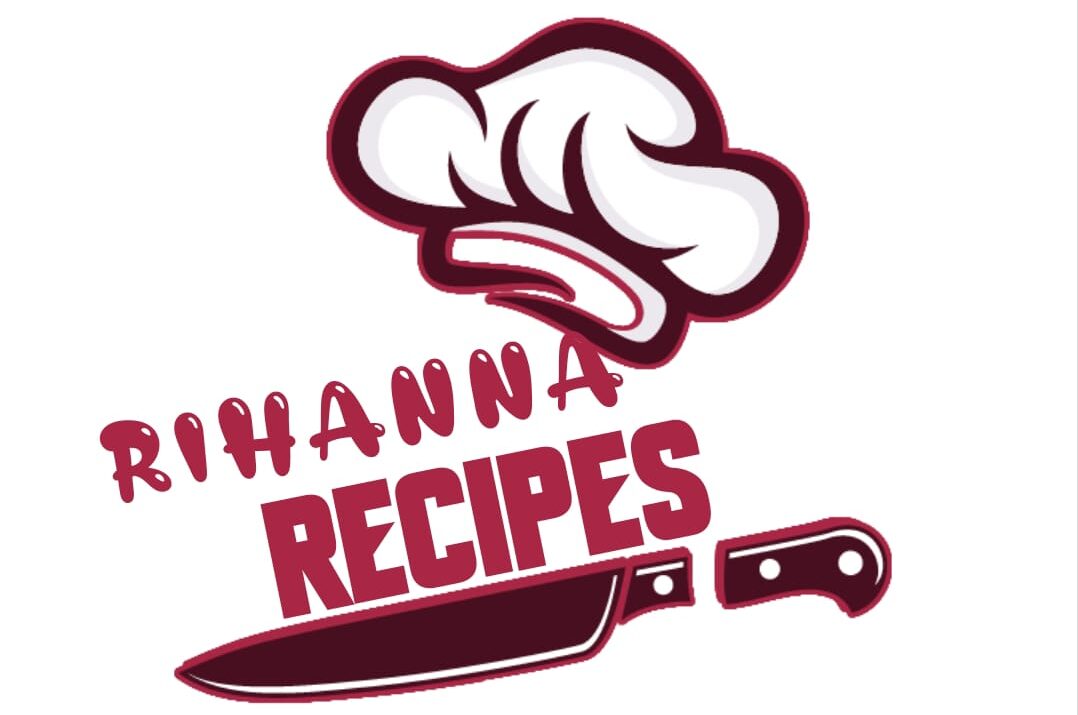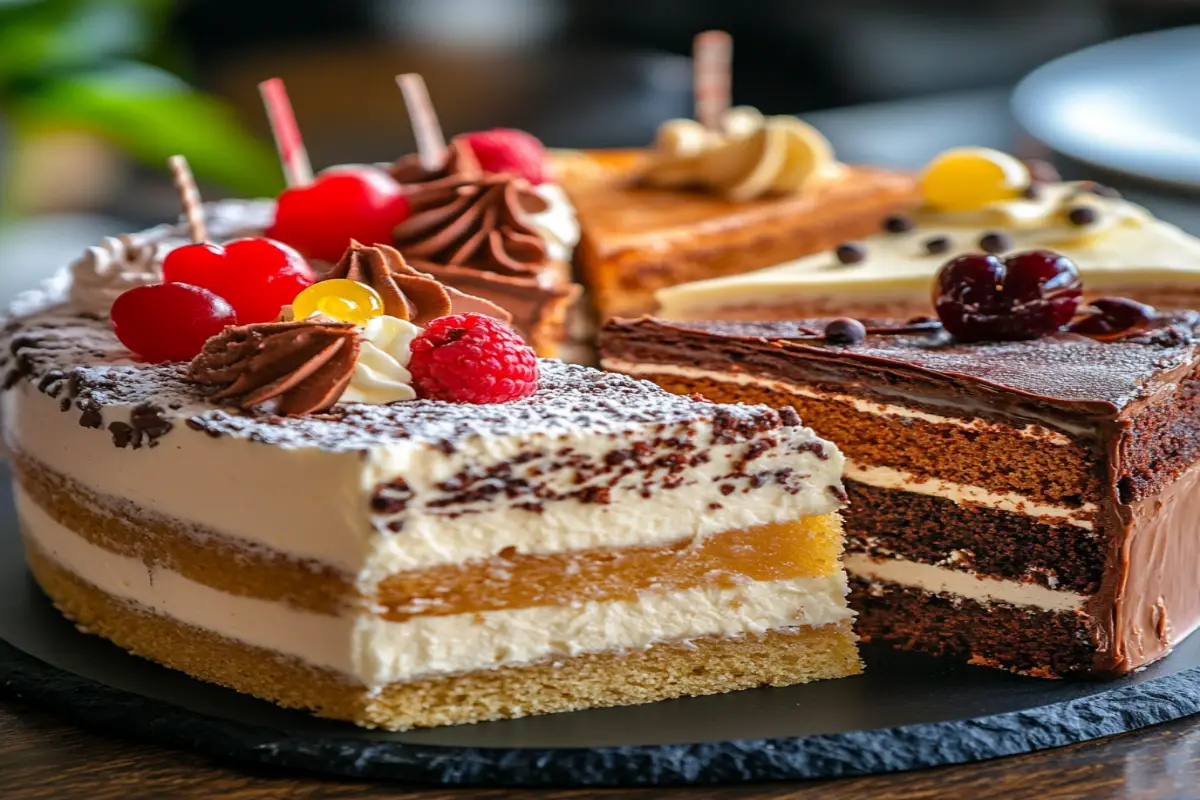Cakes have been a cherished dessert for centuries, enjoyed across various cultures and occasions. Whether it’s a birthday, wedding, or simply an indulgent treat, cakes hold a special place in people’s hearts. But have you ever wondered what are the 4 types of cake? Understanding these types can enhance your baking knowledge and help you choose the best cake for any occasion.
In this comprehensive guide, we will explore what are the 4 types of cake and how they differ in texture, preparation, and flavor. By the end of this article, you’ll be well-versed in the key characteristics of each type and how to bake them perfectly.
Overview: What Are the 4 Types of Cake?
To understand what are the 4 types of cake, we first need to explore how cakes are classified. The four main categories of cake include:
- Butter or Oil Cakes (Shortened Cakes)
- Sponge Cakes (Foam Cakes)
- Baked Flourless Cakes
- Unbaked Flourless Cakes
Each type of cake offers a unique texture, flavor profile, and preparation method. Let’s take a closer look at each one, so you can decide which suits your next baking project.
1. Butter or Oil Cakes (Shortened Cakes)
When people ask what are the 4 types of cake, butter cakes usually come to mind first. Butter or oil cakes, also known as shortened cakes, are among the most popular types. They derive their name from the fat—usually butter or oil—that gives them their rich, moist texture.
Characteristics of Butter Cakes
Butter cakes are dense, soft, and tender. They have a fine crumb and a moist texture, thanks to the fat content. The key characteristic of a butter cake is the use of fat to “shorten” the gluten strands in the flour, which makes the cake tender rather than chewy.
Popular examples of butter cakes include:
- Pound Cake
- Yellow Cake
- Marble Cake
- Red Velvet Cake
- Carrot Cake
How to Make Butter Cakes

Butter cakes typically start with the creaming method. This involves beating butter and sugar together until light and fluffy. The process helps to incorporate air, which gives the cake a soft texture. After the butter and sugar are sufficiently creamed, eggs are added one by one, followed by dry ingredients like flour, leavening agents (baking powder or baking soda), and flavorings.
To maintain the cake’s tender crumb, avoid overmixing the batter after adding the flour. Overmixing can lead to excess gluten development, which results in a dense or tough cake.
Why Choose Butter Cakes?
Butter cakes are incredibly versatile. You can flavor them in countless ways, such as adding chocolate, vanilla, citrus zest, or even fruit puree. They work well for layered cakes, as their structure supports heavier fillings and frostings. Whether you’re making a birthday cake or a wedding cake, butter cakes offer endless possibilities.
If you’re curious about the difference between various cakes, consider exploring this ultimate guide to baking cakes, where you’ll find tips on how to perfect your butter cake.
2. Sponge Cakes (Foam Cakes)
The second type of cake you need to know about when exploring what are the 4 types of cake is the sponge cake. Unlike butter cakes, sponge cakes rely on whipped eggs or egg whites to achieve their structure. These cakes contain little to no fat, resulting in a light, airy texture.
Characteristics of Sponge Cakes
Sponge cakes are light, fluffy, and tend to have a more open crumb compared to butter cakes. The air incorporated into the batter during the whipping process provides the structure, making these cakes rise without the need for additional leavening agents like baking powder.
Common types of sponge cakes include:
- Angel Food Cake
- Génoise Cake
- Victoria Sponge
- Chiffon Cake
- Swiss Roll Cake
How to Make Sponge Cakes
To make a sponge cake, the key step is whipping the eggs (or egg whites) and sugar together until they form a stable foam. This foam provides the air needed for the cake to rise. Depending on the recipe, flour and other dry ingredients are gently folded into the egg mixture to avoid deflating the batter. Some sponge cakes use the whole egg, while others call for separating the yolks from the whites and whipping them separately.
Because sponge cakes contain little to no fat, they are often served with flavorful fillings like fruit preserves, whipped cream, or custard. They also make great bases for layered cakes.
Why Choose Sponge Cakes?
Sponge cakes are ideal for occasions where you want a lighter dessert. They’re often used for tea cakes, summer cakes, or as the base for more elaborate creations like jelly rolls or layered cakes with fresh fruit. Since they can absorb moisture without becoming soggy, sponge cakes work beautifully with syrups or liqueur-based glazes.
For more inspiration on popular cake varieties, check out the top 10 most popular cakes, which include sponge cake options like Angel Food Cake and Chiffon Cake.
3. Baked Flourless Cakes
If you’re wondering what are the 4 types of cake and whether there’s an option for those with dietary restrictions, baked flourless cakes offer a rich and decadent solution. As the name suggests, baked flourless cakes contain no flour, relying instead on eggs, sugar, and other ingredients like chocolate or cream cheese to provide structure.
Characteristics of Baked Flourless Cakes
Baked flourless cakes are dense, fudgy, and rich in flavor. Because they don’t contain flour, these cakes don’t rise as much as traditional cakes. Instead, the eggs and sugar help to bind the cake together and give it a smooth, luxurious texture.
Popular baked flourless cakes include:
- Flourless Chocolate Cake
- Cheesecake
- Torta Caprese
How to Make Baked Flourless Cakes
The process of making a baked flourless cake typically starts by melting chocolate, butter, or cream cheese. The melted mixture is then combined with sugar and eggs, which provide the cake’s structure. Unlike cakes with flour, these cakes don’t need leavening agents, and they are typically baked in shallow pans due to their dense nature.
Why Choose Baked Flourless Cakes?
These cakes are ideal for anyone following a gluten-free diet or those who enjoy a rich, indulgent dessert. Baked flourless cakes are often served at more formal gatherings because of their intense flavor and luxurious texture. They pair well with toppings like whipped cream, fresh berries, or even a dusting of powdered sugar.
If you’re interested in trying a flourless cake, explore how semolina flour impacts baking, especially if you want to experiment with other gluten-free alternatives.
4. Unbaked Flourless Cakes
For those days when you want a dessert without turning on the oven, unbaked flourless cakes offer the perfect solution. These cakes don’t require baking, as they rely on chilling to set the structure. Their smooth, creamy texture makes them ideal for warm-weather desserts or when you’re short on time.
Characteristics of Unbaked Flourless Cakes
Unbaked flourless cakes are typically creamy and rich, with a mousse-like texture. They are often layered with ingredients like whipped cream, condensed milk, or cream cheese. These cakes are set in the refrigerator rather than being baked, and they often contain layers of biscuits or cookies that soften as they absorb the moisture from the filling.
Common examples of unbaked flourless cakes include:
- No-Bake Cheesecake
- Icebox Cake
- Tiramisu
How to Make Unbaked Flourless Cakes

To make an unbaked flourless cake, the ingredients are combined and chilled rather than baked. This often involves whipping cream or cream cheese with other ingredients, layering with cookies or biscuits, and letting the cake set in the fridge for several hours. The result is a refreshing, creamy dessert that is perfect for summer gatherings or when you want a quick and easy treat.
Why Choose Unbaked Flourless Cakes?
Unbaked cakes are not only easy to prepare but also versatile. You can flavor them with anything from fruit to chocolate to coffee, depending on your preference. They’re ideal for those who want to make a dessert without the hassle of baking.
Comparing the Four Types of Cake
Now that we’ve explored what are the 4 types of cake, let’s compare them in terms of texture and flavor:
- Butter Cakes: Dense, rich, and moist, perfect for layered cakes with heavy frostings.
- Sponge Cakes: Light, airy, and perfect for layered cakes with fruit or whipped cream fillings.
- Baked Flourless Cakes: Dense, fudgy, and indulgent, great for formal occasions or gluten-free diets.
- Unbaked Flourless Cakes: Creamy and refreshing, ideal for warm-weather desserts or quick preparation.
Choosing the Right Cake for the Occasion
When deciding what are the 4 types of cake and which one is right for your event, consider the texture and flavor you prefer:
- For birthdays or celebrations, butter cakes work well due to their structure and ability to hold up under frosting.
- For lighter desserts or summer gatherings, sponge cakes provide a refreshing option.
- For formal events or those with dietary restrictions, baked flourless cakes offer an indulgent, gluten-free treat.
- For quick and easy preparation, unbaked flourless cakes are ideal, especially in warmer months.
FAQs
1. What is the most popular type of cake?
Butter cakes, such as chocolate or vanilla, are among the most popular types due to their versatility and rich flavor.
2. What is the difference between sponge cake and butter cake?
Sponge cakes use whipped eggs for their airy structure, while butter cakes rely on butter or oil for a denser, richer texture.
3. What are flourless cakes made of?
Flourless cakes often use ingredients like eggs, sugar, and chocolate or cream cheese to create a rich, dense texture without the need for flour.
4. What is a hybrid cake?
A chiffon cake combines elements of both sponge and butter cakes, using oil for moisture and whipped eggs for a light texture.
Conclusion
Understanding what are the 4 types of cake—butter cakes, sponge cakes, baked flourless cakes, and unbaked flourless cakes—equips you with the knowledge to bake the perfect cake for any occasion. Whether you’re making a birthday cake, a wedding cake, or a casual dessert, each type offers something unique in terms of flavor and texture. For more tips on perfecting your cakes, explore this cake baking guide.

